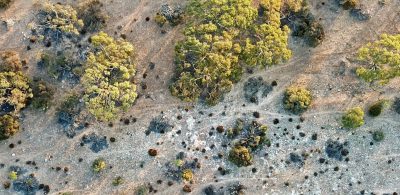Biodiversity policy in the 2022 Federal Election Part 1: what’s on offer from the major parties?
18 May 2022
Climate change has been a key focus of the 2022 Federal Election. However, often less discussed is biodiversity policy and regulation which is closely related to the broader climate change discourse. This Insight is the first of a two-part series on biodiversity policy in the 2022 Federal Election and beyond. In this part, we consider the policies of the major political parties for the 2022 Federal Election. In part two, we consider various forthcoming conferences and reports likely to impact the future of biodiversity regulation across Australia, regardless of the election outcome.
Australia’s biodiversity challenges have been consistently reported in scientific literature. An interim report on ‘Australia’s faunal extinction crisis’ published in 2019 by the Senate’s Environment and Communications References Committee concluded that Australia had a “damning track record of faunal extinction and decreasing biodiversity”.
Despite these challenges, and the attention placed on climate change issues, there has been little focus so far in the Federal Election campaign specifically on biodiversity regulation.
In this Insight, we look at the existing biodiversity policies of Australia’s three major political parties – being the Liberal National Coalition (LNC), the Australian Labor Party (ALP) and the Australian Greens (Greens). These parties’ policies on climate change and renewables can found in other Corrs’ Insights National climate strategy: a key focus of Federal Election 2022; and Sliding ballots: implications of the 2022 Federal Election for the renewable energy sector.
Liberal National Coalition
The LNC biodiversity-related commitments focus on:
- the Environment Restoration Fund (ERC). The purpose of the ERC is to fund activities which will improve environmental outcomes, including the protection of threatened and migratory species and their habitat. The LNC announced in its latest budget an additional $100 million investment in the ERC over three years commencing in 2022-2023, bringing the total investment in the ERC to $200 million since 2019-2020;
- the National Landcare Program. The aim of the program is to fund natural resource management activities which support on-ground biodiversity and sustainable agriculture outcomes, including the Regional Land Partnerships program. This program is currently in its second phase, which runs from July 2018 to June 2023 with a $1 billion investment; and
- the Reef 2050 Long-Term Sustainability Plan. This plan is the Australian and Queensland Government’s overarching framework for the protection and management of the Great Barrier Reef to 2050. An additional $1 billion investment in the plan was announced by the LNC in its latest budget, bringing the total investment in the plan to over $3 billion.
Other forms of biodiversity regulation which we may see if the LNC is re-elected include progression of the following bills which were considered pre-election:
- Agriculture Biodiversity Stewardship Market Bill 2022 (Biodiversity Markets Bill). The Biodiversity Markets Bill sets out the legal framework for the Federal Government’s proposed national voluntary biodiversity stewardship market. The purpose of the market is to financially reward farmers for their efforts to restore, enhance or protect biodiversity by connecting them with private sector and philanthropic buyers who are looking to meet their environmental, social and governance responsibilities; and
- bills to reform the Environment Protection and Biodiversity Conservation Act 1999 (Cth) (EPBC Act), in light of the recommendations made by Professor Graeme Samuel in his Final Report of the Independent Review of the EPBC Act, released in October 2020 (Samuels Report). As outlined in our articles, Federal Government responds to Samuels Review of the Commonwealth Environment Protection and Biodiversity Conservation Act 1999 and Pending changes to the environmental approvals process, the LNC introduced two bills to amend the EPBC Act in response to the Samuels Report (EPBC Act Amendment Bills).[1] Cumulatively, the EPBC Act Amendment Bills sought to accredit states and territories to deliver EPBC Act approvals, referred to as ‘single touch approvals’, underpinned by new National Environmental Standards and the creation of a new position of Environmental Assurance Commissioner to independently oversee the performance of the accreditation system and application of the Standards.
However, concerns have been raised about whether the EPBC Act Amendment Bills are actually consistent with the recommendations outlined in the Samuels Report as discussed in our Insight Do new draft EPBC National Environmental Standards ignore Independent Review of EPBC Act recommendations?
The LNC will also likely continue with the recently released Threatened Species Strategy 2021-2031 and Australia’s Strategy for Nature 2019-2030.
Australian Labor Party
Just over a week out from the Federal Election, the ALP announced components of its overarching environmental policy.
Currently, the ALP’s environmental commitments include:
- an additional $224.5 million to establish a ‘Saving Native Species Program’ and to fund specific threatened species projects. This funding aims to address the threats posed by invasive species and help clear the backlog of overdue native species recovery plans;
- the establishment of an independent Environment Protection Agency, describing it as “a strong cop on the beat that is genuinely independent of the government, [and] will report to the Parliament, and will play a central role in restoring Australians trust in the Commonwealth’s capacity and willingness to protect our precious natural environment”;
- an additional $194.5 million for projects linked to protecting the Great Barrier Reef from the threats of climate change and poor water quality, bringing the total investment in reef preservation and restoration by the ALP to almost $1.2 billion by 2030;
- $200 million to restore urban creeks and rivers;
- $75 million over the forward estimates for up to 1,000 full time equivalent Landcare Rangers to work with local Landcare and Natural Resource Management groups on practical restoration and conservation projects; and
- the doubling of the number of Indigenous Rangers and additional support for the management of Indigenous Protected Areas.
The ALP has also indicated that if elected it would:
- develop a national conservation strategy in consultation with state and territory governments;
- fully respond to the Samuels Report; and
- release the 2021 State of the Environment Report, which the current federal government has had since the end of last year and not yet released.
The ALP has also made a number of other commitments in relation to oceans and marine parks, including working with stakeholders on management plans for the new Christmas Island and Cocos/Keeling Islands marine parks, renewing efforts for protection of the East Antarctic Region, and taking steps to progress international agreements on marine litter and microplastics.
Land management reform will also be on the agenda if the ALP forms government.
The ALP may announce further environmental policies in the final days leading up to the election.
The Greens
The Greens’ environmental policy includes a goal of zero extinctions by 2030, and a commitment to invest $24.4 billion in a mass greening and restoration program over the next decade, including by restoring wildlife habitat, planting 2 billion trees by 2030 and re-establishing green space.
The Greens have also committed to:
- ending native forest logging and transitioning to sustainable plantation forestry;
- the strengthening of environmental protection laws, and the creation of an independent agency to enforce those laws; and
- policies to protect the Great Barrier Reef, Murray-Darling Basin and make major rivers swimmable by 2030.
Outside of the major parties’ policy positions, there are a range of factors coming up which may influence post-election biodiversity regulation. In part two of this Insight series, we will outline and explore the likely implications for biodiversity policy of upcoming key conference and important reports.
[1] Environment Protection and Biodiversity Conservation Amendment (Streamlining Environmental Approvals) Bill 2020 and Environment Protection and Biodiversity Conservation Amendment (Standards and Assurance) Bill 2021.
This article is part of our Australian Federal Election 2022 Insight collection. Read more here.
Authors

Head of Environment and Planning

Senior Associate
Associate
Tags
This publication is introductory in nature. Its content is current at the date of publication. It does not constitute legal advice and should not be relied upon as such. You should always obtain legal advice based on your specific circumstances before taking any action relating to matters covered by this publication. Some information may have been obtained from external sources, and we cannot guarantee the accuracy or currency of any such information.
Key Contact
Head of Environment and Planning



